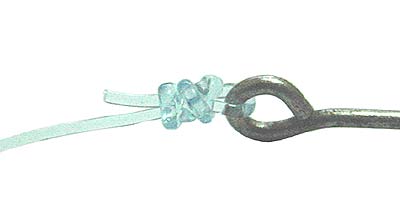

How do you tie a knot that won’t come undone?Įasy then you take the end of your rope you can come up through round. Once you have your cord cut melt the ends with your lighter.

How do you make a single strand scaffold knot?īegin by cutting your paracord to length for this single strand bracelet i'm using roughly 28 inches or 70 centimeters of paracord. In fact the Arbor Knot is really based on a noose knot and, therefore, pulling tightens it. Uses: The Arbor Knot is used to attach the fishing line to the “Arbor” or “Spool Center”. What knot to use to tightens as you pull? You could put the carabiner into this cinch it up cinch it up like. How do you tie a barrel knot on a carabiner?Īnd you're gonna put the tail through where the working end is cinch it down set it up there's your barrel on a bite. It is similar to the poacher’s knot with the only difference being an extra turn around the standing end. The scaffold knot forms a strong loop that can be slid like a noose to fit snugly around a rail, bar, or any other object. It is made similarly to a clove hitch but with one end passed under the other, forming an overhand knot under a riding turn. Simple and secure, it is a harsh knot that can be difficult or impossible to untie once tightened. The constrictor knot is one of the most effective binding knots. Here what we've got under around the plank itself we've actually got the scaffold knot and or the Way of suspending a plank it's a temporary way and when we actually look at this particular setup. What type of knot is used in tying a scaffold board? Pull the working in back towards the loop and wrap it around three times feed the working end through the loops. How do you tie a scaffolding knot?įirst start by creating a bite in the one end of the rope. Typically it is tied to create a lanyard for personal tethers. The Scaffold hitch, otherwise known as a Poacher’s knot, Barrel knot, or Strangle-Snare, is an end-termination knot used mostly in the tree-climbing industry. It may be protected against wear due to chafing by the insertion of a lining called a thimble, creating what sailors refer to as a “hard eye”. Feed the rope or cable through the jaws and around the wrapping area.The Scaffold Knot makes a sturdy loop that slides like a noose to fit snugly around a bar, rail or other object.
SCAFFOLD KNOT INSTALL
Install the invention over the upper and lower rails of a handrail. They are simply wrapped through the jaw and around the hooks like the cord on a vacuum cleaner. With this device there is also no longer a need to tie off the cables. If the rope is accidentally released the jaw mechanism will prevent the items from falling.

The benefits of using such a device:Īs articles are being lifted, a jaw like mechanism keeps the rope under control at all times. It eliminates the need for knot training and simplifies the tie-off process. This invention provides a failsafe to prevent dropped items even in the lifting process. There is also a possibility that the ropes could be dropped as the articles are being lifted up to the platform. As a result of improper training the ropes may be tied too tight, resulting in difficult to release situations or the ropes may be tied too loosely, leaving a potential hazard. Workers are not always trained in the proper ways to tie-off equipment. It was created because:Ī lot of the time in overhead construction, articles are tied to hand rails. This item is patented so making, using, offering for sale, importing, or selling the invention without permission is prohibited. It is an invention that allows workers to tie off ropes for use in scaffold-related work or when articles are tied over rails. A rail mounted tie-off device that eliminates much of the need for knots and hitches.


 0 kommentar(er)
0 kommentar(er)
